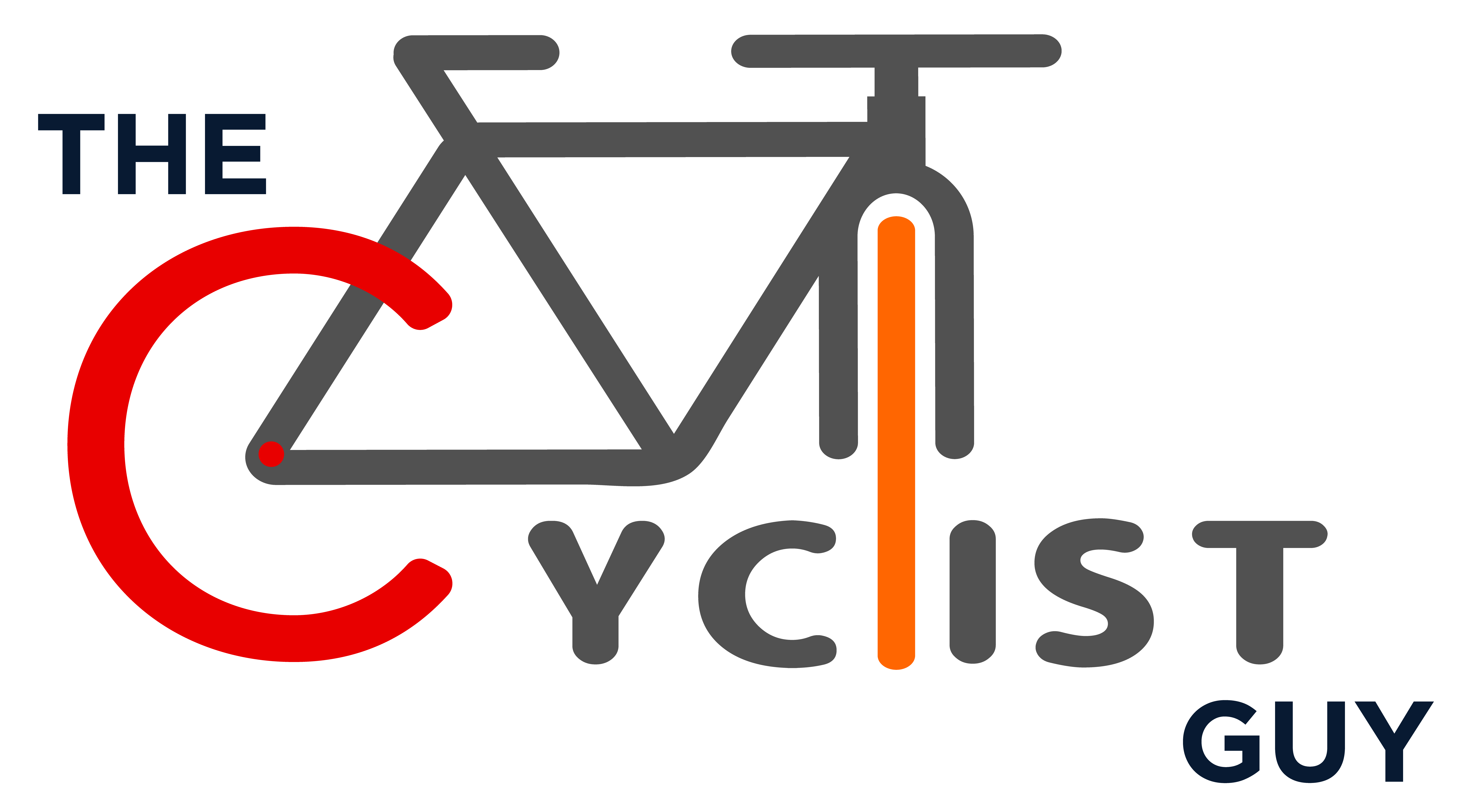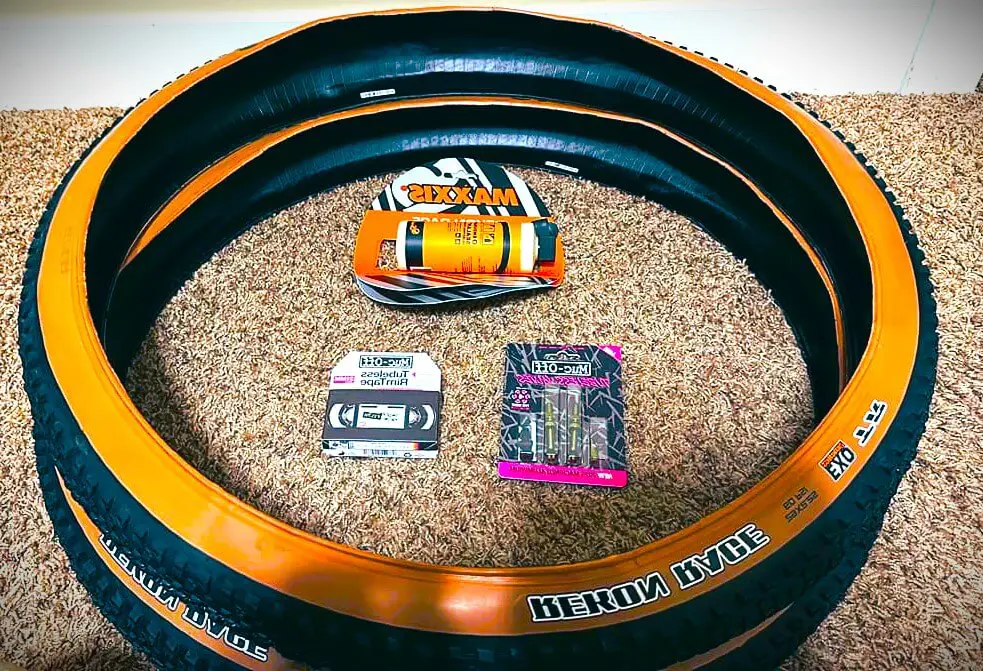Best Bike Fitting Techniques for Optimal Performance!

As an affiliate, we may earn from qualifying purchases. We get commissions for purchases made through links on this website. You can read more on our Affiliate Disclaimer here.
The best bike fitting optimizes both comfort and efficiency for the rider. Precision and personalization are key to achieving an ideal setup.
Securing a proper bike fit is essential for cyclists of all levels. It ensures that each ride is comfortable and reduces the risk of injury, while boosting performance by maximizing power and efficiency.
A professional bike fit considers various factors, including body measurements, flexibility, and riding style, to customize the bike to the rider’s unique specifications.
As technology advances, so do bike fitting techniques, which may involve dynamic analysis and biomechanical assessments.
By investing in a high-quality bike fit, cyclists can enjoy improved handling, greater comfort, and enhanced overall enjoyment of their cycling experience. Whether you’re a competitive racer or a weekend enthusiast, the right bike fit can make a significant difference.
Understanding The Basics Of Bike Fit
Achieving the perfect bike fit is akin to mastering the subtle art of balance in cycling; it’s an intersection where comfort converges with efficiency. Navigating the basics of bike fit is fundamental to any rider’s performance, safety and overall riding enjoyment. Proper bike fit ensures that the cycling experience is tailored to your individual needs, reducing the risk of injury and maximizing your power output and endurance.
Relationship Between Bike Fit And Performance
Bike fit profoundly influences performance. A well-fitted bike makes each pedal stroke more effective, optimizing the transfer of power from your legs to the wheels. The right fit will also minimize aerodynamic drag, allowing for swifter, smoother cycling.
- Comfort and Endurance: A comfortable position reduces fatigue, enabling you to ride longer and with greater ease.
- Power and Efficiency: Adjustments that align your body optimally with the bike can significantly improve pedal power and energy efficiency.
- Injury Prevention: A bike that fits well reduces strain on joints and muscles, which is essential for preventing overuse injuries.
Key Metrics For Bike Fitting
The process of bike fitting involves several key metrics that contribute to creating the perfect riding experience. These metrics cater to different aspects of the bike and the rider’s body.
| Metric | Description | Importance |
|---|---|---|
| Frame Size | Measurement of the bike frame which should be proportional to rider height. | Fundamental to ensuring the rider fits the bike starting point for other adjustments. |
| Saddle Height | Vertical distance from the center of the bottom bracket to the top of the saddle. | Crucial for efficient leg extension during pedaling. |
| Saddle Fore/Aft Position | Horizontal position of the saddle, affecting rider’s reach to the handlebars. | Affects weight distribution and rider balance. |
| Handlebar Reach and Height | Distance and vertical difference between saddle and handlebars. | Determines upper body positioning and affects aerodynamics and muscle load. |
| Cleat Position | Placement of the cleats on cycling shoes that clip into the pedals. | Impacts knee alignment and pedaling efficiency. |
These metrics provide a comprehensive foundation for the bike fitting process. By fine-tuning each aspect, cyclists can achieve a synchrony with their bike that brings out the best in their performance.
Proper Bike Fit Techniques
Welcome to the segment of our blog dedicated to Proper Bike Fit Techniques. Getting the fit right on your bike enhances comfort, increases efficiency, and can prevent injuries.
Whether you’re a casual rider or a seasoned cyclist, understanding how to fine-tune your bike setup is crucial. We will guide you through the essential adjustments that promise a more enjoyable and effective ride.
Importance Of Proper Frame Size
Finding the right frame size is the cornerstone of a proper bike fit. A frame that is too large or too small can lead to discomfort and a less efficient ride. Your bike frame size is determined by your height, the length of your legs (inseam), and your reach.
An appropriately sized frame aligns your body correctly on the bike, ensuring that your pedaling is both powerful and comfortable. Here’s how you can ensure a good fit:
- Stand over the frame with both feet flat on the ground. There should be 1 to 2 inches of clearance for road bikes, and 2 to 4 inches for mountain bikes.
- Check the reach to the handlebars. This should be comfortable with no overstretching.
- Ensure you can comfortably reach the brake levers and all gears.
Adjusting Saddle Position And Height
The position and height of your saddle play a pivotal role in how you feel and perform on the bike. An optimal saddle position assists you in utilizing the full power of your legs without straining. Follow these steps to adjust your saddle:
- Set the saddle at a height where your leg is almost fully extended at the bottom of the pedal stroke.
- The knee should be slightly bent, not locked, when the foot is at the bottom pedal position.
- Adjust the saddle’s fore/aft position so your knee cap is directly above the pedal axle when the pedal is in the 3 o’clock position.
Optimizing Handlebar Reach And Drop
An effective handlebar setup will reduce strain on your arms, shoulders, and back. Correct handlebar reach and drop help maintain a balanced position and provide control over the bike. To optimize your handlebar setup, consider the following:
| Parameter | Adjustment Guideline |
|---|---|
| Reach (distance from saddle to handlebar) | Adjust so elbows are slightly bent when hands are on the bars. |
| Drop (vertical distance from saddle to handlebar) | Set so you can comfortably reach and use all positions on the handlebars without straining. |
Ensuring the right reach and drop requires patience and may necessitate trying different stem lengths and handlebar shapes. Remember, comfort is key, and slight adjustments can make significant differences.
Advanced Bike Fit For Optimal Performance
Achieving optimal performance from your bike begins with a precision fit tailored to your body’s mechanics and riding style. Whether you’re a competitive cyclist or a fitness enthusiast, an advanced bike fit can elevate your riding experience.
This type of fit not only enhances comfort but importantly maximizes efficiency and power output. Focusing on dynamic analysis, precise cleat positioning, and the aerodynamic impact of your biking posture, an advanced bike fit is a cornerstone for any serious cyclist aiming to excel.
Dynamic Bike Fitting
Unlike traditional static fitting, Dynamic Bike Fitting assesses your position in motion. A dynamic fit involves comprehensive analysis while you ride, replicating real-world conditions. This allows for a bike fit that accounts for the continuous changes in posture and alignment as you pedal. The results? A bike that complements your movement, leading to better comfort, higher speed, and reduced injury risk.
Importance Of Cleat Positioning And Pedal Stroke Analysis
The placement of your cleats is a small adjustment that makes a massive impact. Correct cleat positioning is crucial as it forms the essential connection between your bike and your power source—your legs.
Through precise cleat adjustment and pedal stroke analysis, a bike fit ensures your legs deliver power efficiently and symmetrically. This prevents imbalances and overuse injuries, allowing for a smoother, more powerful ride.
- Reduction of hotspots in the feet from improper cleat alignment
- Better knee tracking to avoid strain and injuries
- Increase in power transfer efficiency from rider to bike
Impact Of Aerodynamics On Bike Fit
Aerodynamics play a pivotal role in cycling performance. A bike fit that doesn’t consider aerodynamic efficiency is incomplete. By refining your riding position to reduce wind resistance, you can conserve energy and increase speed.
The fit process includes adjustments to handlebar height, saddle position, and riding posture to strike the perfect balance between comfort and aerodynamic profile.
| Adjustment | Benefit |
|---|---|
| Handlebar Position | Lowered wind resistance, improved control |
| Saddle Position | Optimized leg extension and power output |
| Posture | Better aerodynamics, reduced muscular fatigue |
Professional Bike Fitting Services
Embarking on a cycling journey with a bike that fits like a glove can dramatically enhance the riding experience. Professional Bike Fitting Services are essential for both amateur cyclists and seasoned professionals because they ensure your bike is tailored to your body’s measurements and riding style.
A proper bike fit minimizes discomfort, increases efficiency, and can prevent long-term injuries. Let’s dive into the depths of how a professional bike fitting can transform your cycling session into a symphony of speed and comfort.
What is a professional bike fitting?
A professional bike fitting is a detailed process aimed at adjusting and optimizing a bicycle for its rider, enhancing both comfort and performance. This procedure is tailored to the individual’s body measurements, riding style, and goals. Here are the key elements of a professional bike fitting:
- Interview: The process often begins with an interview where the fitter assesses the rider’s goals, style, and any previous cycling-related injuries or discomforts.
- Physical Assessment: This involves evaluating the rider’s flexibility, strength, and physical dimensions, such as limb length and torso size. This step is crucial for understanding how the rider’s body interacts with the bicycle.
- Static and Dynamic Bike Fit Measurements: The bike is adjusted according to the initial measurements, and then further refined as the fitter observes the rider pedaling, usually on a stationary trainer. Both static (rider stationary) and dynamic (rider in motion) assessments are used.
- Adjustments: Based on observations and measurements, the fitter makes a series of adjustments. These can include changing the saddle height and position, handlebar height and reach, and even the type of saddle or handlebars. The goal is to find a balance between aerodynamics, efficiency, and comfort.
- Cleat Positioning: For riders using clipless pedals, adjusting the position of the cleats on the cycling shoes is an important step. Proper cleat positioning can prevent knee pain and improve pedaling efficiency.
- Feedback and Fine-Tuning: The rider provides feedback on the feel of the adjustments, and further fine-tuning is done as needed. This iterative process ensures the fit is customized to the rider’s comfort and performance needs.
- Follow-up: Some fitters offer a follow-up session to make any necessary adjustments after the rider has had some time to adapt to the new setup.
A professional bike fitting is beneficial for all types of cyclists, from beginners to professionals, and can significantly improve riding comfort, reduce the risk of injuries, and enhance performance by ensuring the rider’s energy is efficiently transferred to the bike.
It’s often considered a worthwhile investment for anyone looking to take their cycling seriously.
Benefits Of Professional Bike Fitting Services
- Reduced risk of injury: By aligning the cyclist’s body and bicycle in harmony, the chances of overuse injuries diminish significantly.
- Improved comfort: Tailored adjustments mean you can say goodbye to unnecessary pain during and after a ride.
- Increased power and endurance: An optimized riding position allows for more efficient muscle engagement and energy conservation.
- Enhanced overall riding experience: When your bike feels like an extension of your body, every ride becomes more enjoyable.
How To Choose The Right Bike Fitting Specialist
Selecting a bike fitting expert requires attention to detail. Here are key factors to consider:
| Criteria | Why It Matters |
|---|---|
| Certifications | A certified specialist has demonstrated knowledge and skills adhering to industry standards. |
| Experience | More time in the field often translates to a deeper understanding of various body types and fitting complexities. |
| Technology Utilization | A fitter who employs the latest technology can offer more precise adjustments and a better fitting outcome. |
| Customer Feedback | Reviews can provide insight into the fitter’s approach and success in delivering a comfortable, efficient bike fit. |
The Role Of Technology In Bike Fitting
Advancements in technology have revolutionized the bike fitting process. State-of-the-art techniques like motion capture systems, pressure mapping, and dynamic fitting equipment allow for unprecedented levels of personalization. Riders can now experience a fit process that measures every nuance, from pedal stroke to spine curvature, delivering a fit profile that is uniquely theirs.
Embracing these technological tools ensures a bike fit is not just good, but exceptional, paving the way for optimal performance and a sublime cycling experience.
Diy Bike Fitting Tips
Getting the perfect bike fit is crucial for comfort, performance, and to prevent injury. For cycling enthusiasts looking to personalize their setup without the expense of a professional fitting, DIY bike fitting could be the solution. With insightful tips and a bit of patience, you can achieve a fit that feels custom-tailored to your body. Let’s dive into the essentials of doing it yourself with some key areas of focus.
Tools And Resources For Diy Bike Fitting
Assemble the right tools and resources to ensure your DIY bike fitting session is successful. Here’s a list to get you started:
- Plumb Line: To ensure proper alignment and saddle position.
- Tape Measure: For accurate measurements of your bike and body dimensions.
- Level: To check horizontal alignment.
- Angle Finders or Inclinometer App: To measure angles of your knee, hip, and elbow joints.
- Mirror: To visually check your posture and alignment as you ride.
- Camera or Smartphone: To record your riding and analyze your position.
Additionally, make use of online calculators, videos, and forums where fellow cyclists share their fitting experiences and advice.
Common Mistakes To Avoid In Diy Bike Fitting
Bike fitting is a precise process, and mistakes can lead to discomfort or injury. Avoid these common pitfalls:
- Incorrect Saddle Height: Too high or too low affects your pedaling efficiency and can strain your knees.
- Improper Handlebar Position: Leads to shoulder, neck, or back pain.
- Neglecting Cleat Placement: Can cause numbness or hot spots in the feet.
- Overlooking Your Flexibility: Each person’s range of motion should dictate their bike setup.
- Forgetting to Test Ride: Always check the new fit in a real-world scenario, not just statically.
Monitoring And Adjusting Bike Fit Over Time
Bike fitting isn’t a one-time task. Monitor and adjust your fit over time to cater to changes in your body, riding style, or cycling goals. Consider regular check-ins on these aspects:
- Saddle Comfort: As you ride more, your preference for saddle position might change.
- Handlebar Reach: Continue to fine-tune for optimal comfort and performance.
- Foot Position: Make slight adjustments to cleat position if you feel any discomfort.
Maintaining a fit diary or log can be useful to track these changes and how they correlate with your comfort and performance on the bike.

Credit: www.bicycling.com
Frequently Asked Questions For Best Bike Fitting
What Is Bike Fitting And Why Is It Important?
Bike fitting is the process of adjusting a bicycle for a rider’s unique body measurements and riding style. It ensures comfort, improves efficiency, and can prevent injuries. Proper fitting allows for a more enjoyable and sustainable cycling experience.
How Often Should You Get A Bike Fit?
Ideally, you should get a bike fit when you purchase a new bike or if there are changes in your riding style, goals, or physical condition. Seasoned riders often recommend a professional fit every 2-3 years to account for any changes in flexibility or posture.
Can Bike Fitting Improve Performance?
Yes, a professional bike fit can enhance performance by optimizing your position for power output and aerodynamics. It aligns your posture to pedal more effectively, reducing fatigue and allowing for sustained efforts during longer rides or races.
What Adjustments Are Made During A Bike Fit?
During a bike fit, key adjustments may include saddle height and position, handlebar height and reach, and cleat positioning. These tailored modifications aim to achieve the best possible balance of comfort and performance for the rider.
Conclusion
Ensuring your bike fits like a glove is crucial for both comfort and performance. Embrace the journey toward the perfect ride by consulting professionals and utilizing tailored adjustments. Remember, a bike that fits well boosts enjoyment and helps prevent injuries.
Get fitted, get riding, and experience the difference firsthand.

Steven is a professional cyclist and his passion is cycling. He has been cycling for the last 6 years and he loves using bikes while outing as well. Based on his experiences with the different types of bikes; he is sharing his opinions about various bikes so that a beginner can start right away. Find him on Twitter @thecyclistguy Happy Biking.




